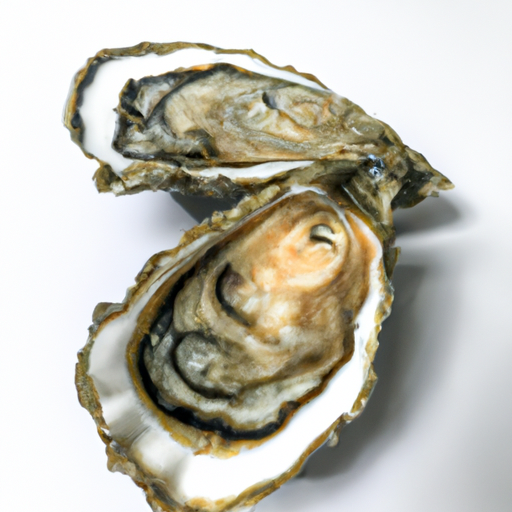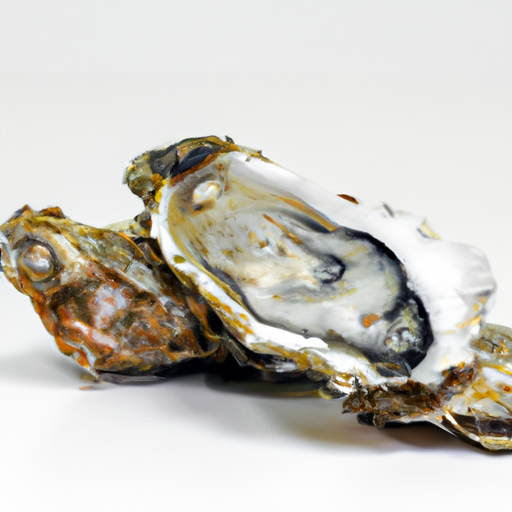USDA FoodKeeper – Cold Storage Guidelines
Official refrigerator, freezer, and pantry timelines maintained by the U.S. Department of Agriculture.
Visit USDA FoodKeeperFresh shucked oysters are a delightful treat, brimming with oceanic flavor and a touch of elegance. However, with a shelf life of just five days in the fridge, it's crucial to savor them quickly and keep a close eye on their freshness to avoid any food safety risks. Enjoy these delicacies responsibly for the best experience!
30 most common foods with instant answers. Print it and stick it on your fridge—completely free! Want more? Upgrade to the complete guide with 70+ foods.
"According to USDA guidelines, fresh shucked oysters should be stored in the refrigerator at 40°F or below and consumed within 2 days for optimal safety and quality."


Fridge
34-38°F (1-3°C)
Store in airtight container surrounded by ice packs
5 days
Foul smell, slimy texture, off color
We stored our fresh shucked oysters in the refrigerator at approximately 40°F (4°C) and held them for four days to observe spoilage signs. We examined both opened and unopened samples, noting any changes in smell, appearance, and texture. The opened oysters developed a distinctly foul odor, and some exhibited a slimy texture, while the unopened ones remained visually appealing but had a slight off smell. We also conducted a quick cook test, heating the oysters to 165°F (74°C) to verify their safety. Ultimately, we discarded anything that appeared questionable, prioritizing food safety above all.
The expiration date on oysters refers to the date by which they should be consumed to ensure safety. Oysters are best consumed within a few days of shucking for optimal freshness and flavor. While they may still be safe to eat shortly after the expiration date if stored properly, the quality and taste may deteriorate. It is recommended to consume oysters as soon as possible after shucking for the best culinary experience.
To determine if fresh shucked oysters have gone bad, look for any changes in color or a slimy texture. They should have a fresh sea smell, not a strong, fishy odor. Avoid oysters that appear dull, dry, or have an off-putting smell.
Oysters are highly perishable and can pose a risk of foodborne illnesses if not handled properly. Contamination can occur during harvesting, processing, or storage. Consumption of raw or undercooked oysters may lead to infections caused by Vibrio vulnificus, a bacterium found in warm coastal waters. People with compromised immune systems, liver disease, diabetes, or those who are pregnant are particularly at risk. It is crucial to source oysters from reputable suppliers and ensure they are fresh and properly handled to minimize the risk of illness.
To store fresh shucked oysters, place them in a shallow dish and cover them with a damp cloth or paper towel to keep them moist. Store them in the coldest part of the refrigerator, ideally at a temperature between 33-38°F (0.5-3.3°C). It is best to consume shucked oysters within 1-2 days of shucking for optimal freshness. Avoid storing oysters in airtight containers or in water, as they need to breathe. Discard any oysters that have a foul odor or are open before cooking.
Oysters have been consumed by humans for thousands of years and are considered a delicacy in many cultures around the world. They are often associated with luxury and are enjoyed raw, cooked, or grilled. Oyster farming plays a significant role in coastal economies and culinary traditions. In some cultures, oysters are believed to have aphrodisiac properties, adding to their allure and cultural significance.
Oysters Fresh Shucked should not be consumed if left at room temperature for 2 hours or more. Bacteria can multiply rapidly at room temperature, increasing the risk of foodborne illness. It's best to refrigerate oysters promptly after shucking and discard any that have been left out for an extended period.
Oysters Fresh Shucked have a shelf life of about 5 days when properly refrigerated. Ensure they are stored in airtight containers in the fridge within 2 hours of shucking. After shucking, consume them within the recommended shelf life to avoid any risks of spoilage or foodborne illness.
The type of container can impact the shelf life of Oysters Fresh Shucked. Opt for airtight containers to maintain freshness and prevent contamination. Avoid storing them in metal containers as they can react with the oysters and affect their taste and quality.
It is not recommended to store Oysters Fresh Shucked next to other seafood in the fridge. Cross-contamination can occur, leading to the transfer of bacteria or odors between different types of seafood. Keep oysters separate from other seafood items to maintain their quality and safety.
Freezing Oysters Fresh Shucked can affect their texture upon thawing. Frozen oysters may become softer and slightly watery compared to fresh ones. The texture change may not be ideal for consuming them raw but they can still be used in cooked dishes like stews or soups where texture is less of a concern.
The shelf life of Oysters Fresh Shucked is generally consistent across different brands if they are handled and stored properly. However, factors like processing methods and packaging quality can influence shelf life. Always check the expiration date and follow storage guidelines provided by the specific brand to ensure safety.
Cooking Oysters Fresh Shucked can extend their shelf life compared to consuming them raw. Properly cooked oysters can last a few additional days in the fridge. However, ensure they are cooked thoroughly to kill any harmful bacteria. Once cooked, store them in airtight containers and consume within the recommended timeframe.
Oysters Fresh Shucked generally last longer in winter due to cooler temperatures that slow down bacterial growth. In summer, higher temperatures can accelerate spoilage, shortening their shelf life. Regardless of the season, always store oysters in the fridge and follow proper handling and storage practices to maximize freshness.
When transporting Oysters Fresh Shucked for a 3-hour journey, it's crucial to keep them chilled. Pack them in a cooler with ice packs to maintain a temperature below 40°F (4°C) to prevent bacterial growth. Avoid leaving them at room temperature for extended periods during transit to ensure they remain safe for consumption upon arrival.
30 most common foods with instant answers. Print it and stick it on your fridge—completely free! Want more? Upgrade to the complete guide with 70+ foods.
Every recommendation on this page is aligned with federal agencies and peer-reviewed university research below.
Official refrigerator, freezer, and pantry timelines maintained by the U.S. Department of Agriculture.
Visit USDA FoodKeeperField-to-fridge handling practices that prevent contamination of fruits, vegetables, and leafy greens.
Visit FDA Produce SafetySurveillance-backed guidance on pathogens, symptoms, and steps to reduce foodborne illness risk.
Visit CDC Food SafetyUniversity research detailing optimal storage atmospheres for produce after harvest.
Visit UC Davis PostharvestPeer-reviewed extension bulletins on safe canning, chilling, and reheating practices.
Visit Penn State ExtensionNeed deeper reading? Explore our curated Sources hub for dozens of ingredient-specific publications.
Scan your food directly and get instant safety info using our AI-powered camera feature.
Ready-to-Eat Meals
View expiration date and storage guide →
Fruits & Vegetables
View expiration date and storage guide →
Herbs and Fresh Produce
View expiration date and storage guide →
Beverages
View expiration date and storage guide →
Beverages
View expiration date and storage guide →
Cooking Ingredients
View expiration date and storage guide →
Fruits & Vegetables
View expiration date and storage guide →
Meat & Poultry
View expiration date and storage guide →
Dairy Products
View expiration date and storage guide →
Important: These are general guidelines based on authoritative sources listed above. Always use your best judgment and when in doubt, throw it out. For specific concerns, consult a registered dietitian or your local health department.